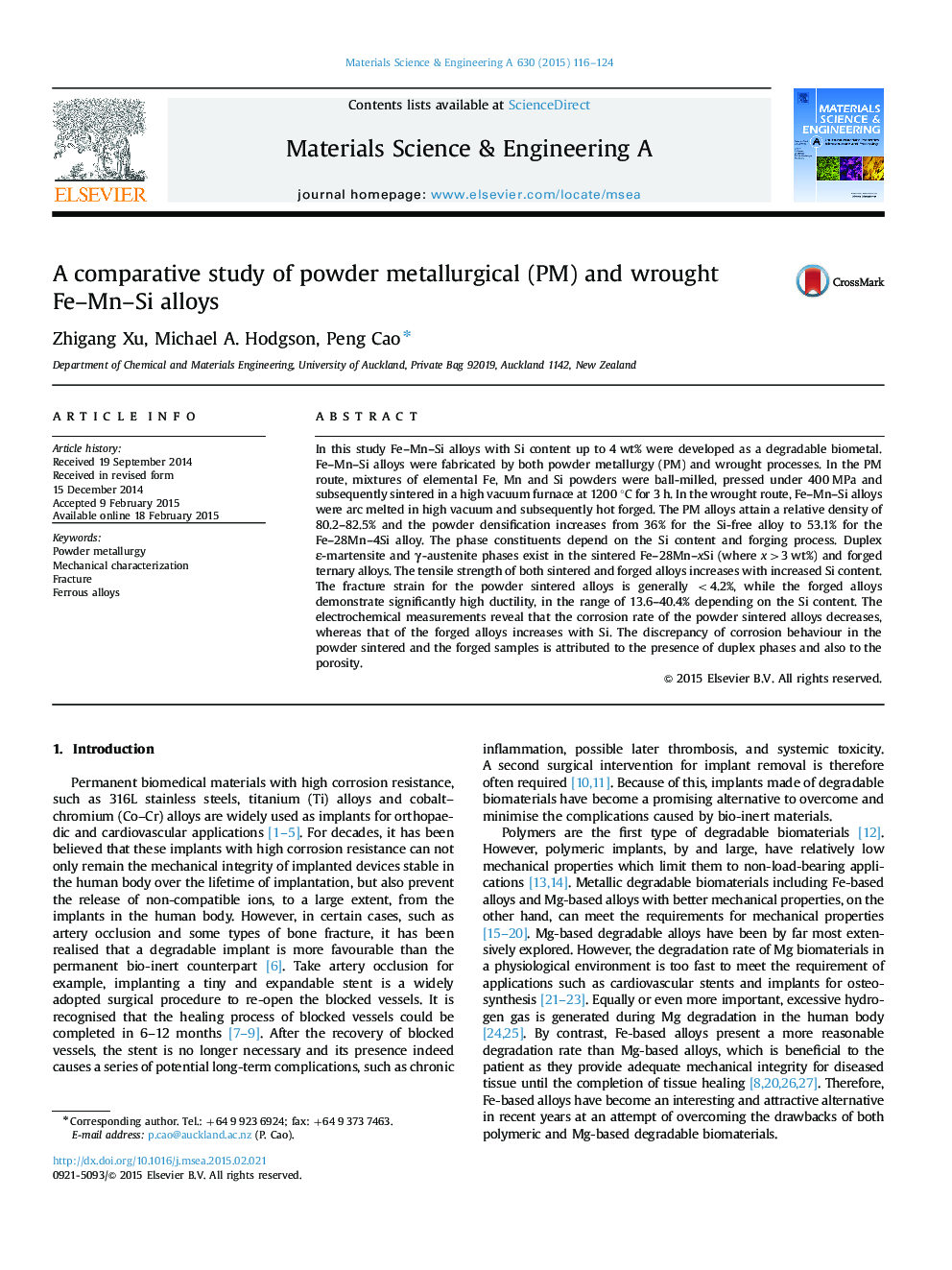| کد مقاله | کد نشریه | سال انتشار | مقاله انگلیسی | نسخه تمام متن |
|---|---|---|---|---|
| 1574449 | 1514713 | 2015 | 9 صفحه PDF | دانلود رایگان |

In this study Fe–Mn–Si alloys with Si content up to 4 wt% were developed as a degradable biometal. Fe–Mn–Si alloys were fabricated by both powder metallurgy (PM) and wrought processes. In the PM route, mixtures of elemental Fe, Mn and Si powders were ball-milled, pressed under 400 MPa and subsequently sintered in a high vacuum furnace at 1200 °C for 3 h. In the wrought route, Fe–Mn–Si alloys were arc melted in high vacuum and subsequently hot forged. The PM alloys attain a relative density of 80.2–82.5% and the powder densification increases from 36% for the Si-free alloy to 53.1% for the Fe–28Mn–4Si alloy. The phase constituents depend on the Si content and forging process. Duplex ε-martensite and γ-austenite phases exist in the sintered Fe–28Mn–xSi (where x>3 wt%) and forged ternary alloys. The tensile strength of both sintered and forged alloys increases with increased Si content. The fracture strain for the powder sintered alloys is generally <4.2%, while the forged alloys demonstrate significantly high ductility, in the range of 13.6–40.4% depending on the Si content. The electrochemical measurements reveal that the corrosion rate of the powder sintered alloys decreases, whereas that of the forged alloys increases with Si. The discrepancy of corrosion behaviour in the powder sintered and the forged samples is attributed to the presence of duplex phases and also to the porosity.
Journal: Materials Science and Engineering: A - Volume 630, 10 April 2015, Pages 116–124